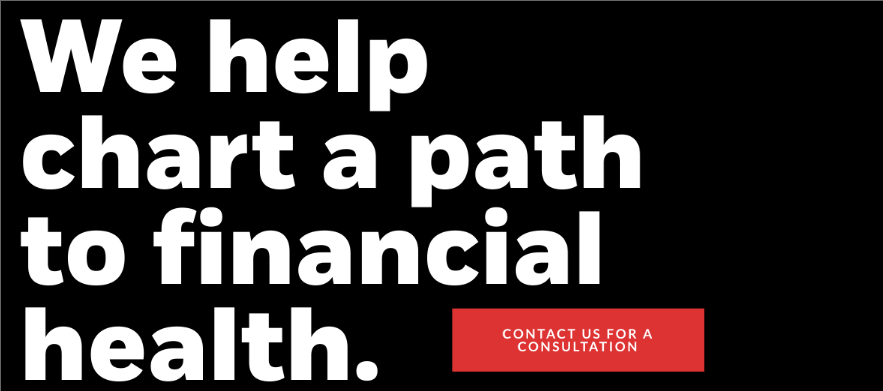[vc_row][vc_column][vc_column_text css=”.vc_custom_1574650258490{margin-bottom: 0px !important;}”]Is contributing and saving for retirement a priority for you in 2020? Are you wondering how much you can save? The Treasury Department recently announced it’s latest inflation adjusted (cost-of-living) figures affecting dollar limitations for pension plans and other qualified retirement account savings for tax year 2020:
- 401(k) contribution limits have gone up
- Traditional IRA contribution limits stay the same
- And almost all other numbers have increased
This information was recently announced in an article written by a Forbes Contributor Ashlea Ebeling. She stated that amount you can contribute to your 401(k) or similar workplace retirement plan increased slightly from $19,000 in 2019 to $19,500 in 2020. She also noted that the 401(k) catch-up contributor limit if you are 50 or older in 2020, will be $6,500 for workplace plans, which is a slight increase from $6,000. What is unchanged, is the amount you are allowed to contribute to an Individual Retirement Account (IRA) in 2020: $6,000, with a $1,000 catch-up limit if you are 50 or older.
She also mentions that the 50 plus “super savers” can put away $33,000 in these tax-advantaged accounts for 2020. And if your employer allows after-tax contributions or if you are a self employed business, you tuck away even more. Because the overall defined contribution plan limit moves up to $57,000, from $56,000.
Not every one takes full advantage of this. Ashlea points out that during 2018, only “13% of employees with retirement plans at work saved the then maximum of $18,500/$24,500” according to a Vanguard’s How America Saves report. And in plans that offer catch up contributions, 15% of people who are above the age of 50 took advantage of the extra savings opportunity. But higher earner income bracket professionals save more, with 6 out of 10 people who earn $150K plus did contribute the maximum amount allowed, including catch-ups. As mentioned earlier the IRS Notice 2019-59 for full technical guidance was written by Tom Morgan of the Office of the Associate Chief Counsel (Employee Benefits, Exempt Organizations, and Employment Taxes). Ashlea mentions if you are interested in the new 2020 tax brackets, standard deduction amounts check out that article. The organization TIAA has helpful COLA chart explaining the changes.
Here is rundown on all the different retirement savings plans and changes
401(k)s – the annual contribution limit for employees who participate in 401(k), 403(b), most 457 plans and the federal government’s Thrift Savings Plan is $19,500 for 2020—a $500 increase over 2019. Keep in mind that you can make changes to your 401(k) election at any time during the year, not just during open enrollment season when most employers send you a reminder to update your elections for the next plan year.
The 401(k) Catch-Up – the catch-up contribution limit for employees age 50 or older in these plans is $6,500 for 2020. This is the first time that the IRS has made an increase since 2015 when it rose to $6,000. Even if you don’t turn 50 until December 31, 2020, you can make the additional $6,500 catch-up contribution for the year.
SEP IRAs and Solo 401(k)s – for the self-employed and small business owners, the amount they can save in a SEP IRA or a solo 401(k) goes up from $56,000 in 2019 to $57,000 in 2020. That’s based on the amount they can contribute as an employer, as a percentage of their salary; the compensation limit used in the savings calculation also goes up from $280,000 in 2019 to $285,000 in 2020. Check out the retirement planning for small business article I published last year.
After-tax 401(k) contributions – if your employer allows after-tax contributions to your 401(k), you also get the advantage of the $57,000 limit for 2020. It’s an overall cap, including your $19,500 (pretax or Roth in any combination) salary deferrals plus any employer contributions (but not catch-up contributions).
The SIMPLE – the limit on SIMPLE retirement accounts goes up from $13,000 in 2019 to $13,500 in 2020. The SIMPLE catch-up limit is still $3,000.
Defined Benefit Plans – the limitation on the annual benefit of a defined benefit plan goes up from $225,000 in 2019 to $230,000 in 2020. These are powerful pension plans (an individual version of the kind that used to be more common in the corporate world before 401(k)s took over) for high-earning self-employed folks.
Individual Retirement Accounts – the limit on annual contributions to an Individual Retirement Account (pretax or Roth or a combination) remains at $6,000 for 2020, the same as in 2019. The catch-up contribution limit, which is not subject to inflation adjustments, remains at $1,000. (Remember that 2020 IRA contributions can be made until April 15, 2021.)
Deductible IRA Phase-Outs – you can earn a little more in 2020 and get to deduct your contributions to a traditional pretax IRA. Note: Even if you earn too much to get a deduction for contributing to an IRA, you can still contribute—it’s just nondeductible.
In 2020, the deduction for taxpayers making contributions to a traditional IRA is phased out for singles and heads of household who are covered by a workplace retirement plan and have modified adjusted gross incomes (AGI) between $65,000 and $75,000, up from $64,000 and $74,000 in 2019. For married couples filing jointly, in which the spouse who makes the IRA contribution is covered by a workplace retirement plan, the income phase-out range is $104,000 to $124,000 for 2020, up from $103,000 to $123,000.
For an IRA contributor who is not covered by a workplace retirement plan and is married to someone who is covered, the deduction is phased out if the couple’s income is between $196,000 and $206,000 in 2020, up from $193,000 and $203,000 in 2019.
Roth IRA Phase-Outs – the inflation adjustment helps Roth IRA savers too. In 2020, the AGI phase-out range for taxpayers making contributions to a Roth IRA is $196,000 to $206,000 for married couples filing jointly, up from $193,000 to $203,000 in 2019. For singles and heads of household, the income phase-out range is $124,000 to $139,000, up from $122,000 to $137,000 in 2019.
If your income is to high to open a Roth IRA, Ashlea suggests “opening a nondeductible IRA and convert it to a Roth IRA as Congress lifted any income restrictions for Roth IRA conversions.” To learn more about the backdoor Roth, see Congress Blesses Roth IRAs For Everyone, Even The Well-Paid.
Saver’s Credit – the income limit for the saver’s credit for low- and moderate-income workers is $65,000 for married couples filing jointly for 2020, up from $64,000; $48,750 for heads of household, up from $48,000; and $32,500 for singles and married filing separately, up from $32,000. Check out the Grab The Saver’s Credit for details on how it can pay off.
QLACs – the dollar limit on the amount of your IRA or 401(k) you can invest in a qualified longevity annuity contract (QLAC) is increased to $135,000 from $130,000. See Make Your Retirement Money Last For Life for how QLACs work.










